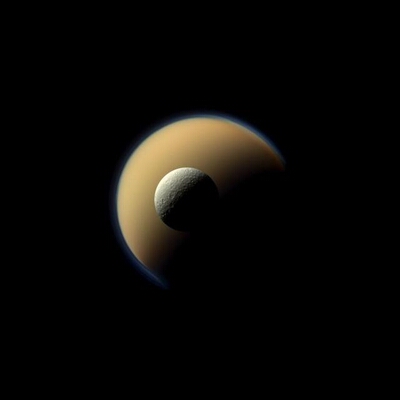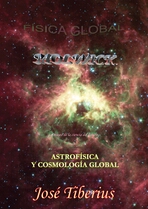1.d.4. Paradox of the last relativistic dolphin
Einstein himself admitted his Special Relativity could not explain the twin paradox. later on, General Relativity purportedly solved this problem
We suppose General Relativity avoids any twin symmetry by acknowledging that gravitational fields are somehow “privileged” frames of reference. Consequently, the twins disappear and the paradox becomes relative.
A new paradox now appears when one reflects upon another phenomenon of outer space –the orbits of planets revolving around moving stars. Indeed, the orbits of these planets might change as a function of the chosen frame of reference.
To solve this new relativistic paradox might be necessary to establish new privileged frames of reference. We shall analyze this possibility below.
The paradox of the Last Relativistic Dolphin concerns the different shapes of planetary orbits, which depend on the frame of reference chosen. The dependency is due to the effect of kinetic energy; for further information, see the pages on Gravity Probe B and the Precession of the Perihelion of Mercury from the book Global Gravity Law.
We know that variation in kinetic energy –due to the double effect of gravity on it than on mass– provokes changes in gravitational force per unit mass. This variation in gravity force occurs both in Global Physics and in General Relativity’s so-called space-time; in fact, both theories use this phenomenon to explain the precession of the perihelion of Mercury. However, in the case of General Relativity and its prevailing obscurantism, the fact that kinetic energy is responsible for this adjustment is not usually explicitly stated.

Recall that in Global Physics interaction between mass and the reticular structure of matter –Global Aether (gravitational - kinetic - mass)– moves the mass. The different approximations for Global Aether are to represent better its various properties for specific explanations.
From the starting point of a circular orbit –to simplify argumentation–, let us look at the following situations:
-
The star is at rest
The planet’s circular orbit is stable and has a constant velocity, kinetic energy, and gravitational or centripetal force. In both relativistic and global models, gravitational force will have one component due to the kinetic energy of the planet itself.
However, there will not be a precession of the perihelion of the orbit in either model, as we are considering a circular orbit. Thus, the orbit will be slightly smaller than it would be in Newton’s Classical Physics.
-
The star is moving in the same plane as the orbit
When the orbiting planet is surpassing the star, its velocity will be larger than that of the star itself, even in case of an initially circular orbit. Likewise, when the star is overtaking the planet, the velocity of the latter will be smaller than the stars.
In other words, the velocity of the planet cannot be constant, and thus its kinetic energy cannot be either. Consequently, gravitational force will vary, due to the effect that kinetic energy has to it. The variation will produce a small ellipsoid eccentricity, perpendicular to the direction the star is moving in.
Moreover, this effect will have a lateral displacement, as the planet will be closer to the star when its velocity –and thus, the gravitational force per unit mass– is at a maximum.
In this case, just as in the case of Mercury, there will be a precession of the perihelion of the orbit.
It is clear that a change in the system of reference will alter the shape of planetary orbits.
The movement of the star is perpendicular to the orbit plane
The velocity of the planet in the direction of movement of the star is constant; thus, it will not produce the effect we are analyzing. Moreover, one notable difference between this situation and the first case –that of a star at rest– is that the gravitational force here will be higher. The difference is due to the kinetic energies of both the star and the planet.
Now we have described the orbits we are interested in, the problem will be to determine which of these orbits is correct; or indeed, whether they could all be correct. Let us look at the possible solutions, depending on which theory is applied.
-
General Relativity
The solution to the paradox will be slightly more difficult than in the case of the twin paradox. Now, one cannot just make the gravitational field the privileged frame of reference; one would have to choose a physical frame of reference also including the kinetic energy that produces the observed shape of the orbit.
With so many restrictions and privileges, General Relativity might be somewhat less relative. Nevertheless, complex relativistic geometries –such as Riemann’s– will doubtless manage to make all orbits correct. For each system of reference, both classical potential energy and kinetic energy will modify the very axes of the four-dimensional Minkowski metric in tensors of field equations. This variation will be enough to make orbits equivalent and have the same shape.
However, the problem now will be the fact that kinetic energy –which is one variable that modulates the dimensions– will no longer depend on the gravity of a particular mass or the velocity within the chosen frame of reference, but on the velocity concerning the mechanisms that configure its very nature. In other words, it will depend on the velocity concerning its natural frame of reference –Global Aether– just as the gravitational field depends on the mass that creates it and not on any arbitrary system of reference.
Of course, General Relativity completely denies the possibility of the vacuum itself having mechanical properties, as this would directly lead to the existence of some aether, which is to say, a quantum vacuum that is not, in fact, a vacuum. Nevertheless, we would say the very existence of gravity implies the same thing, or at least something very similar.
The simple fact of incorporating gravity into a new metric –the Riemann metric– should not hide its physical meaning. Something exists which has mechanical properties, and which has a locally privileged nature. One could make an analogous argument regarding the Kerr metric incorporating Lens-Thirring effect, which describes how a gravitational field has a dragging effect on light.
Even if General Relativity were to accept space-time having mechanical properties, which would manifest themselves via its dilations and contractions, it would not solve this new paradox. In this case, the mechanisms of kinetic energy would be the same as those that make atomic clocks desynchronize due to variations in velocity. However, its privileged system of reference would not coincide with that of gravitational potential energy. In other words, the Principle of Equivalence in GR would break.
Of course, one could always create mixed metrics that give local and ad hoc mathematical solutions with bi-univocal asymptotic transformations and multiple singularities at points where the transformation cannot be bi-univocal. However, this would no longer be General Relativity, but a mathematical adaptation of some other theory with different principles.
On the other hand, it is imperative to recall that General Relativity does not seem to be having much success when it comes to explaining the phenomena of outer space as discussed in the previous sections of this book. It only seems to be able to explain 5% of the matter in the Universe.
-
Global Physics
The book Physics and Global Dynamics, in its section on mechanisms of movement, explains that the mechanism which produces velocity is an interaction between the spatial configuration of global mass –including kinetic energy– and kinetic or Global Aether –quantum foam, strings or space-time with mechanical properties. Thus, velocity effects depend on its natural reference frame –Global Aether.
In other words, though it might seem that spatial vacuum offers no resistance to movement of planets, Global Dynamics considers this resistance to increase with the quadratic relation between the velocity of the object and the speed of light. The relation is precisely the quantification of kinetic energy.
To aid intuitive understanding, one could imagine a dolphin swimming in the water. The faster the dolphin swims, the higher the resistance from the water will be. This increase will not be linear.
Independently from other energy exchanges, the energy absorbed by resistance to movement will return in the form of an impulse as movement goes on. This mechanism is due to the perfect elasticity of Global Aether (gravitational, kinetic, mass).
The book on Global Gravity Law explicitly adds the mass equivalent to kinetic energy to Newton’s Law of Universal Gravitation. In this way, it explains the precession of the perihelion of Mercury with a non-relativistic model. The resulting mathematical formula for this precession is practically the same as Einstein’s 1916 expression and as Paul Gerber’s pre-relativistic 1898 formula. Nevertheless, the physical interpretation is reasonably different for each of these three theories.
Therefore, if one knew a priori the shape of a planet’s orbit around a star at rest, in theory, one could calculate the velocity of movement of the star concerning Global Aether. However, in this context, it is not possible; the only thing one could measure would be the difference in velocities when the planet overtakes or not the star –this is in fact what produces the lateral ellipsoid eccentricity.
Also, we cannot know whether Global aether is at rest or whether it is moving in a particular direction regarding the whole galaxy or others possible points of reference.
This limitation is because the kinetic energy consequence of the shared velocity of the planet-star system concerning Global Aether would always be present; as such, it is indistinguishable from the standard gravitational force. In other words, it would be included within Newton’s Universal Gravitational Constant, as all masses will attract each other with a superior force per unit physical mass, the higher the aforementioned common velocity. We should take into account that masses of planets are quantified based on the supposed constancy of this gravitational constant.
In other words, Newton’s Universal Gravitational Constant is not constant. Of course, this statement is also true within the context of General Relativity, though distortions in space-time –relativistic aether– would hide it.
We do not know whether our current technology can take precise enough measurements of planetary orbits to detect these effects, as they are of a lower order of magnitude than precession of planets.
However, as we mentioned previously, including the precession could improve adjustments in the table of positions of planets –ephemerides– and masses in the Solar System. One should also take into account that the non-linearity of kinetic energy helps when the system includes various planets with different velocities.
A different approximation would be the possibility of studying precession of orbits together with their corresponding precession in planetary axes of rotation, which would seemingly remain even in the case of circular orbits.
In any case, these simple theoretical discussions could be relevant and show the desire to propose further scientific experimentation. Of course, it will all remain speculation until it we can prove them.
Another investigative route could be to compare the effects of the paradox of the last relativistic dolphin with the data obtained from the Cosmic Microwave Background (CMB).
Though in this case, it might not be possible to confirm the velocity relative to the CMB, one could perhaps confirm its orientation concerning the direction of the Sun.
